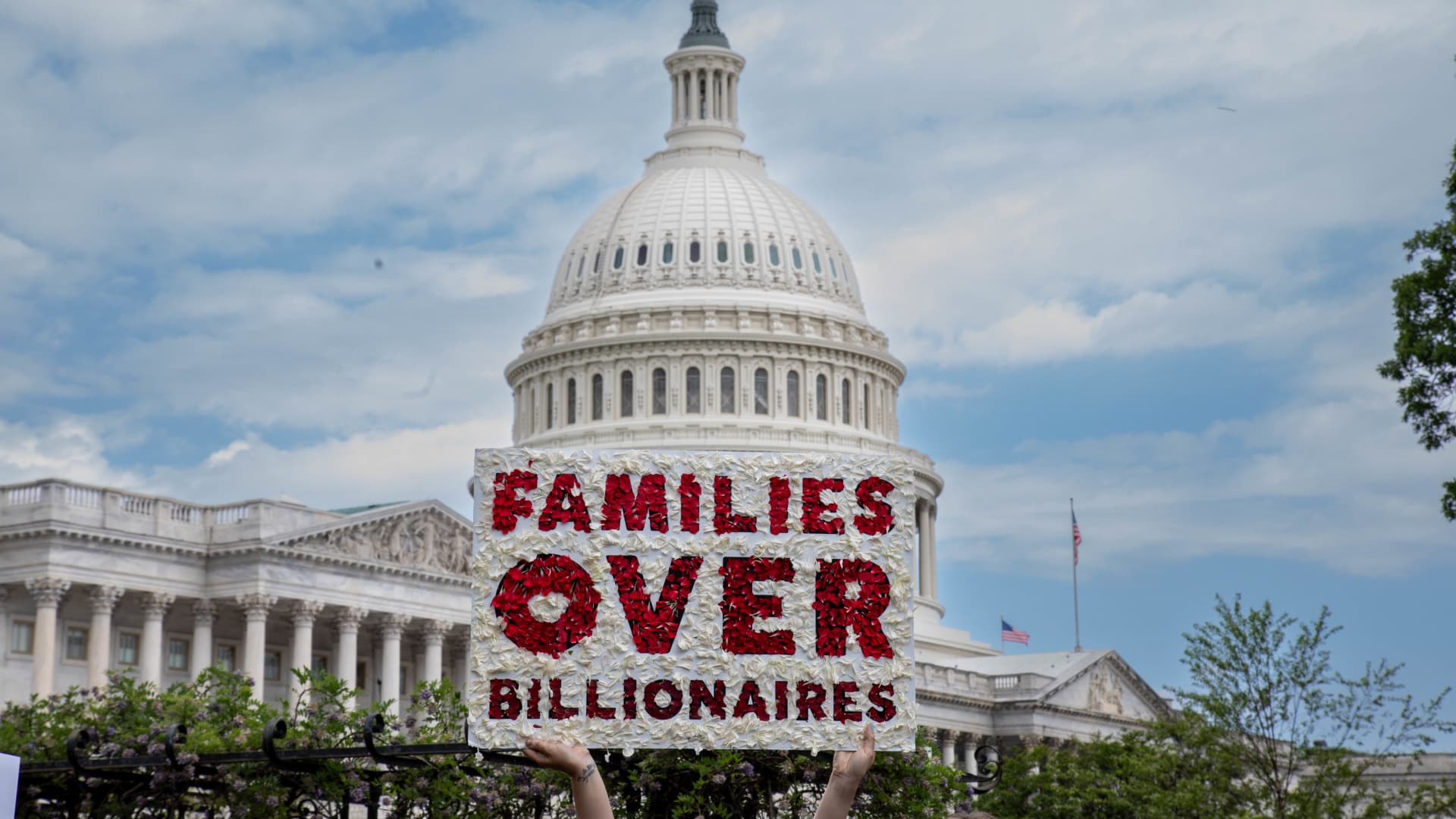Cofotoisme | E+ | Getty Images
How long it takes you to save for a 20% down payment on a home depends in part on where you live.
In a pricey area such as New York City, it could take the typical buyer roughly 10.85 years to save $173,000, which is 20% of the median list price of $865,000 for a home, according to a report by RealtyHop, a real estate investment agency.
RealtyHop measured the “barrier to homeownership” for the top 100 U.S. cities by population. The analysis is based on median list price using more than 1.5 million residential listings, as well as median household income data from the U.S. Census Bureau. It assumes a household saves 20% of its annual gross income and intends to make a 20% down payment.
More from Personal Finance:
Here’s the inflation breakdown for December 2024 — in one chart
Worried about Social Security’s future? What to consider before claiming benefits
Here’s who qualifies for Biden’s $4.2 billion in student loan forgiveness
In each of the five cities with the lowest barrier to homeownership, the savings timeline is less than four years.
Detroit has the lowest barrier to homeownership, the report found.
In Detroit, potential homebuyers who earn about $39,575 — the median household income in the area — need just 2.53 years to come up with a 20% down payment on a home purchase, the report found. That amounts to $20,000 for a home priced at $100,000.
Cleveland, Ohio, is the runner-up: A potential buyer in the area needs 3.55 years to save $27,800, or 20% of a home that costs $139,000, the median listing price in the area.
Rounding out the top five are Baltimore; Buffalo, New York; and Pittsburgh.
Even in cheap cities, there can be savings roadblocks
Big expenses can derail your down payment savings timeline, even in a city where homes are less expensive.
A separate report by Zoocasa, a Canada-based real estate website and brokerage, found that homebuyers with children on average take longer to come up with a 20% down payment versus buyers without children because of expenses such as child care costs.
Potential homebuyers with children in Detroit, for example, need roughly 20.3 years to save for a 20% down payment from scratch, according to Zoocasa. Meanwhile, homebuyers without children in the area need about 4.2 years to come up with a 20% down payment if they’re starting off without prior savings, the report found.
Rising home prices can represent another challenge, said Jacob Channel, an economist at LendingTree.
“The more expensive real estate is where you want to live, the more you’ll probably want to save for a down payment,” Channel said.
The median list price for homes in Los Angeles, for example, is about $1.13 million, RealtyHop found. LA tops the list of five cities with the biggest barriers to homeownership, followed by Irvine, California; Miami; New York City; and Anaheim, California.
Even the cheapest real estate price on the “high barrier” list — No. 3, Miami — is $699,000, nearly three times pricier than the most expensive city on the “low barrier” list, Pittsburgh.
If a typical household in LA aimed for a 20% down payment, they would need to save $1,339 a month for roughly 14.10 years, the report found.
Why you might not need to put 20% down
In many cases, a 20% down payment is not required for you to buy a home.
In the third quarter of 2024, the average down payment was 14.5% and the median amount was $30,300, according to Realtor.com data. That’s down from 14.9% and $32,700 in the second quarter of 2024, the site found.
Some mortgages require much smaller down payments. For instance, the Department of Veterans Affairs offers VA loan programs; those who qualify can put down as little as 0%. Mortgages from the U.S. Department of Agriculture, referred to as USDA loans, aim to help buyers purchase homes in rural areas and also offer 0% down payment options.
Federal Housing Administration loans, or FHA loans, can require as little as 3.5% down for qualifying borrowers, which include first-time buyers, low- and moderate-income buyers, and buyers from minority groups.
The benefit of a smaller down payment is that you can become a homeowner faster, and with less saved up, experts say.
But if you decide to buy a home with less cash upfront, you’ll likely end up with higher monthly mortgage payments.
“If you put less money toward a down payment, you’re going to end up with a larger loan,” Channel said.
Additionally, private mortgage insurance is usually added on to the monthly cost when the buyer puts less than 20% down on the home, he said.
PMI can cost anywhere from 0.5% to 1.5% of the loan amount per year, depending on factors such as your credit score and your total down payment, according to The Mortgage Reports. For example, on a loan for $300,000, mortgage insurance premiums could cost from $1,500 to $4,500 a year, or $125 to $375 a month, the site found.
“That’s another kind of payment that might be bundled in with your mortgage that further increases your housing costs,” Channel said.
How to come up with your own savings timeline
Where you want to live long-term and what your financial circumstances are can help you figure out your own down payment savings timeline, according to Melissa Cohn, regional vice president at William Raveis Mortgage.
First, you need to have a good household budget — understand how much money you make, the amount you typically spend and what you’re able to save in a given month, said Cohn.
“Can you cut back on how much you spend? Can you increase your savings? … Can you save your bonuses every year?” she said.
Then, find out what a house in your desired location typically costs. “It would be important for a buyer to go out and get an understanding of what price point would work for them,” Cohn said.
You also have to save for closing costs, which can vary substantially from place to place, Cohn said.
Average closing costs can range from roughly 2% to 6% of the loan amount, according to NerdWallet. So a $300,000 mortgage could require from $6,000 to $18,000 in closing costs on top of the down payment, it said.
To figure out what closing costs typically amount to in your desired area, ask a mortgage broker or a real estate agent, she said.
Overall, you want to set realistic goals for yourself and take the time you need to get there.
“Go as slow or as quickly as you need to,” LendingTree’s Channel said. “Ensure that you’re making good choices.”


 Economics7 days ago
Economics7 days ago
 Economics7 days ago
Economics7 days ago
 Finance7 days ago
Finance7 days ago
 Economics5 days ago
Economics5 days ago
 Economics7 days ago
Economics7 days ago
 Blog Post6 days ago
Blog Post6 days ago
 Personal Finance5 days ago
Personal Finance5 days ago
 Personal Finance6 days ago
Personal Finance6 days ago












